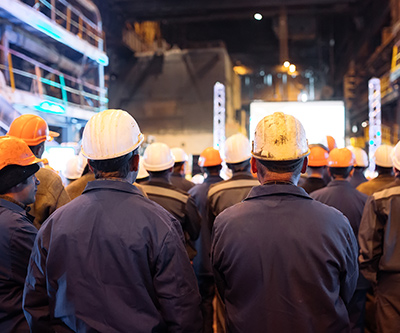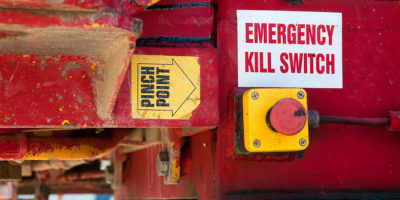Safety Audits
Posted: Feb. 11, 2020 • By Kevin Kohler

Safety audit reports in the media always seem to be negative
It’s often bad news when we read and hear about audits and audit findings in the media. A sample of some recent headlines includes:
- Safety audit finds schools lacking…
- (Audit finds city) failed to inspect and repair bridges…
- Audit finds flaws in food safety program…
- Auditor… finds serious concerns over elevator safety…
And the list goes on. The audits that we hear about are meant to be attention grabbing or were prompted by a negative event. Safety audits may well uncover deficiencies in our safety program, but that should not be the focus of our audits. Audits must also be used to determine what we are doing well that supports our safety goals and objectives, so that we can continue to implement effective improvements to our program.
We do safety inspections, isn’t that an audit?

Safety inspections are a valuable tool in verifying that our workplace is safety compliant. Safety inspections are a snapshot of the conditions in a work area, process or piece of equipment. Inspections may be required by legislation or are part of a routine schedule. They often use checklists and tend to emphasize pass or fail results for their target. Inspections help to ensure that hazards are being controlled and that new hazards are being identified on a daily basis.
Audits differ from inspections in several ways:
- They look at an entire safety management system or a complete element
- They look at each individual component of the safety system
- They establish relative results, not just pass-fail results
- They are designed to be an integral part of the continuous improvement process
- They are structured to help us determine if our overall safety goals and objectives are being met
Audits are intended to determine:
- Whether the health and safety management system is effective
- How the system can be improved
What types of audits are there?

Audits can be categorized as:
Compliance audits: targeted audits to determine compliance with standards, rules, and legislation.
Program audits: audits restricted to one program of your health and safety management system.
Management system audits: an audit that evaluates your health and safety system as a whole against your overall goals and objectives
Audits can be carried out internally by trained employees, or externally by accredited auditors.
You may be required to conduct a certain type of audit depending upon:
- A safety certification (ISO 45001 or other industry or government program) you wish to obtain or maintain
- Government or industry mandated safety accreditations for your industry
- A previous government order or audit deficiency
- A client requirement
We have audits every so often but I’m not sure what becomes of them
To ensure that your audits are meaningful and that employees are engaged in the continuous improvement process, you should:
- Establish clear quantifiable goals and objectives for your health and safety system
- Communicate the reasons for conducting an upcoming audit to all employees
- Involve senior management in conducting the audit
- Use outside resources and specialists if required
- Involve employees and contractors in your audit
- Include employee, contractor and client interviews
- Determine what you are doing well in addition to what can be improved
- Track your findings and assign responsibilities for any action items
- Publish your results, share them with all employees and encourage their contribution to improving the health and safety system
Everyone must be involved so that audits are used in a positive manner to ensure that our health and safety management system is both effective and continuously improving.
Related Articles

Sun Safety and Cancer Hazards
As summer launches into full swing, we want to address the risk of cancer from exposure to the sun. Many workers are exposed to the sun at work and over-exposure can lead to skin cancer.
Read Article
Pinch Points
We check off “pinch points” all the time on our hazard inspections Our treatment of this common checklist item, and […]
Read Article